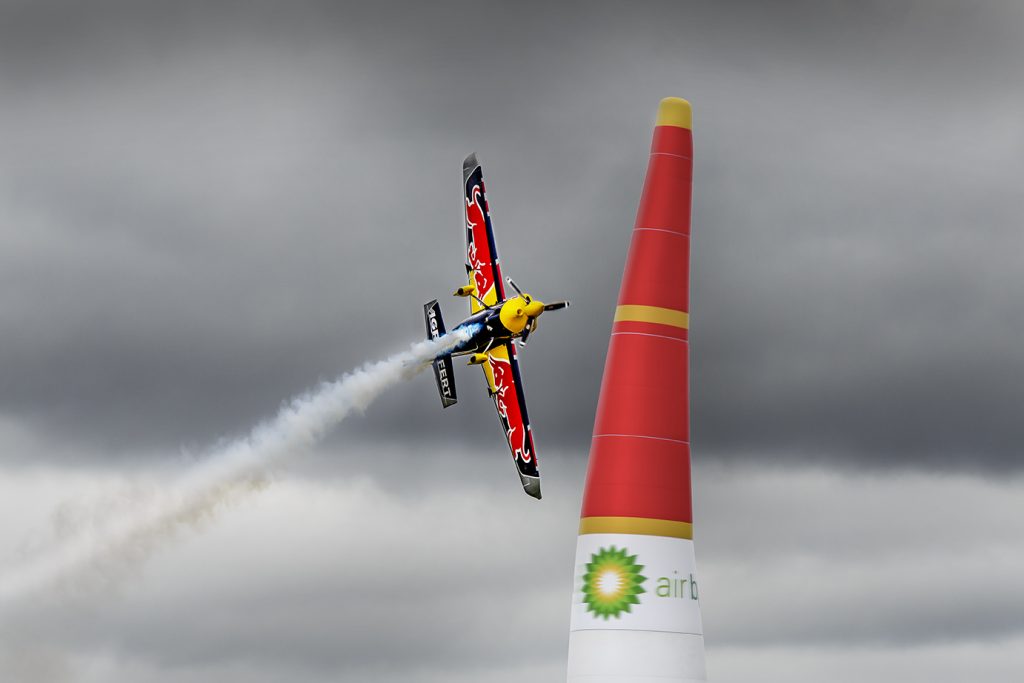 I don’t really hide the fact that I’m a racing fanatic. Anyone who is familiar with my work or has met me, even briefly, knows that if it has wheels and an engine, I’m probably into it. I’ve been lucky enough to get up close and personal with a variety of machines in the past, ranging from stock cars to endurance prototypes and IndyCar single seaters. One thing I’ll admit I’ve never been as familiar with, however, are airplanes. That’s not to say I don't love planes (in fact, the two things I wanted to be most of all at age five were a fighter pilot and race car driver, in that order), but I’ve never had that same type of exposure. Naturally, when Hamilton was gracious enough to extend an offer to come observe the Red Bull Air Race season finale at the legendary Indianapolis Motor Speedway (on my birthday and with my father coming along, no less), then, my interest was a little more than piqued. Full disclosure, there may have been some screaming and fist-pumping.
I don’t really hide the fact that I’m a racing fanatic. Anyone who is familiar with my work or has met me, even briefly, knows that if it has wheels and an engine, I’m probably into it. I’ve been lucky enough to get up close and personal with a variety of machines in the past, ranging from stock cars to endurance prototypes and IndyCar single seaters. One thing I’ll admit I’ve never been as familiar with, however, are airplanes. That’s not to say I don't love planes (in fact, the two things I wanted to be most of all at age five were a fighter pilot and race car driver, in that order), but I’ve never had that same type of exposure. Naturally, when Hamilton was gracious enough to extend an offer to come observe the Red Bull Air Race season finale at the legendary Indianapolis Motor Speedway (on my birthday and with my father coming along, no less), then, my interest was a little more than piqued. Full disclosure, there may have been some screaming and fist-pumping.
 The Indianapolis Motor Speedway is more than a cathedral of speed, it’s the Vatican. Since 1911, the fastest men in the world have come to these two and a half miles and four corners to add their faces to the greatest trophy in motorsports: the magnificent Borg-Warner Trophy. The Yard of Bricks has been on my bucket list since before I could walk, but I’m almost embarrassed to say I had never made the pilgrimage before. And what better partner to explore the Great American Race Track with than the Great American Watch Brand, Hamilton? Hamilton’s involvement in the globe-trotting Red Bull Air Race series runs deep: not only have they become the official timekeeper for the series in 2017, Team Hamilton has partnered with veteran pilot Nicolas Ivanoff in the series since 2005. All in all, I seemed to be in excellent hands as Hamilton revealed their final surprise before the event. Weather permitting, one of these daredevil Air Race pilots would have me riding shotgun for a G-Flight demonstration in the skies above Indy- a once-in-a-lifetime chance to experience up to 6 Gs of centrifugal force in mind-bending maneuvers like the Cuban Eight, the Immelmann Turn, and whatever the hell a Humpty Bump is.
The Indianapolis Motor Speedway is more than a cathedral of speed, it’s the Vatican. Since 1911, the fastest men in the world have come to these two and a half miles and four corners to add their faces to the greatest trophy in motorsports: the magnificent Borg-Warner Trophy. The Yard of Bricks has been on my bucket list since before I could walk, but I’m almost embarrassed to say I had never made the pilgrimage before. And what better partner to explore the Great American Race Track with than the Great American Watch Brand, Hamilton? Hamilton’s involvement in the globe-trotting Red Bull Air Race series runs deep: not only have they become the official timekeeper for the series in 2017, Team Hamilton has partnered with veteran pilot Nicolas Ivanoff in the series since 2005. All in all, I seemed to be in excellent hands as Hamilton revealed their final surprise before the event. Weather permitting, one of these daredevil Air Race pilots would have me riding shotgun for a G-Flight demonstration in the skies above Indy- a once-in-a-lifetime chance to experience up to 6 Gs of centrifugal force in mind-bending maneuvers like the Cuban Eight, the Immelmann Turn, and whatever the hell a Humpty Bump is.
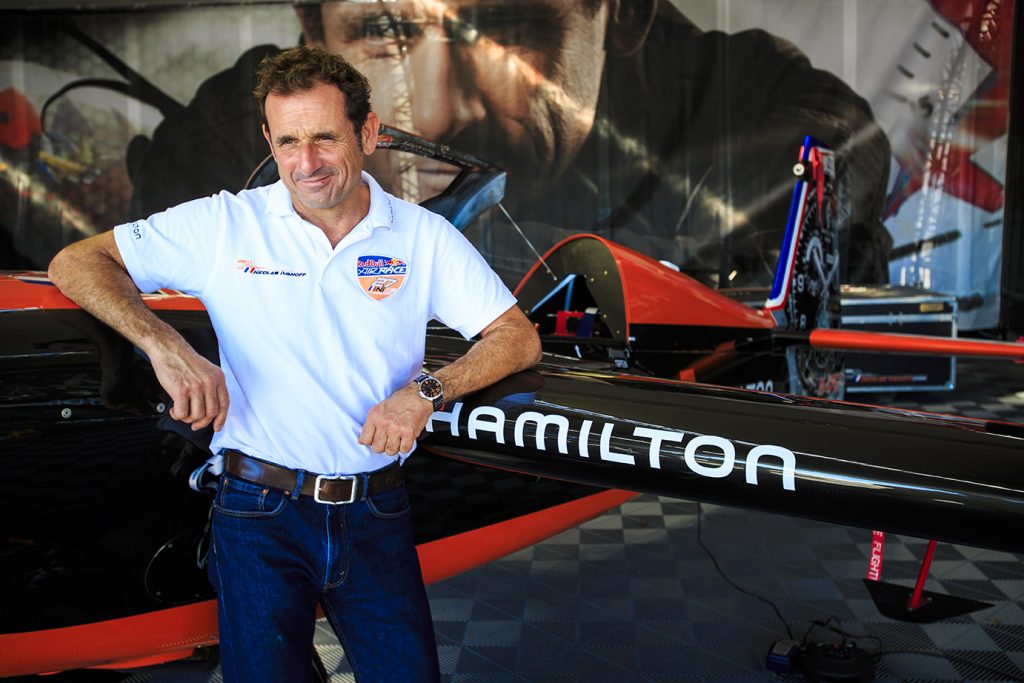
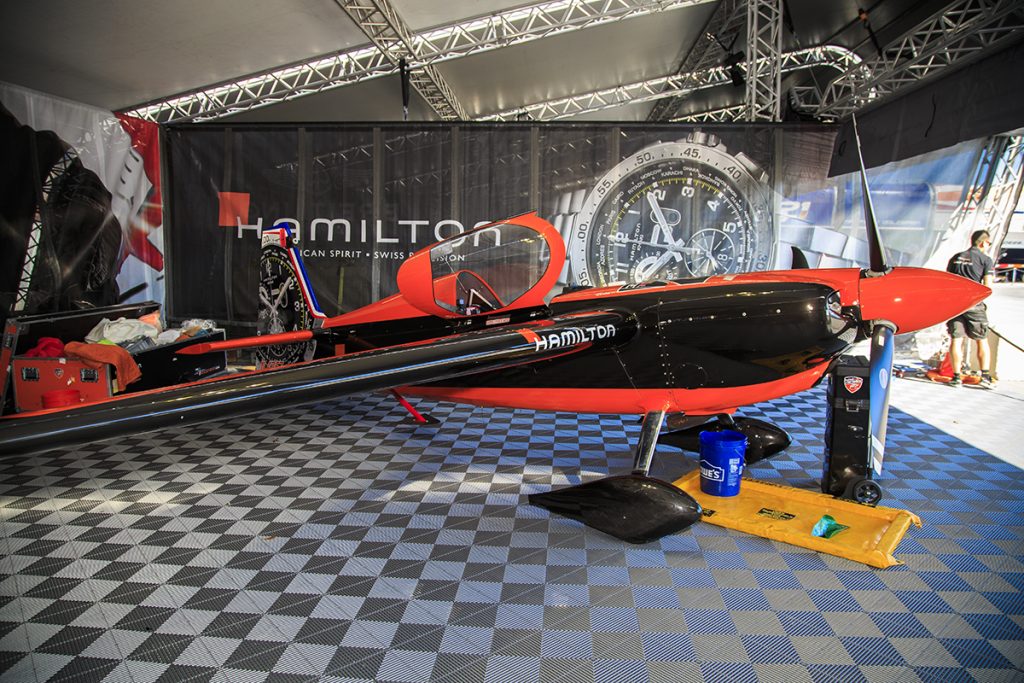
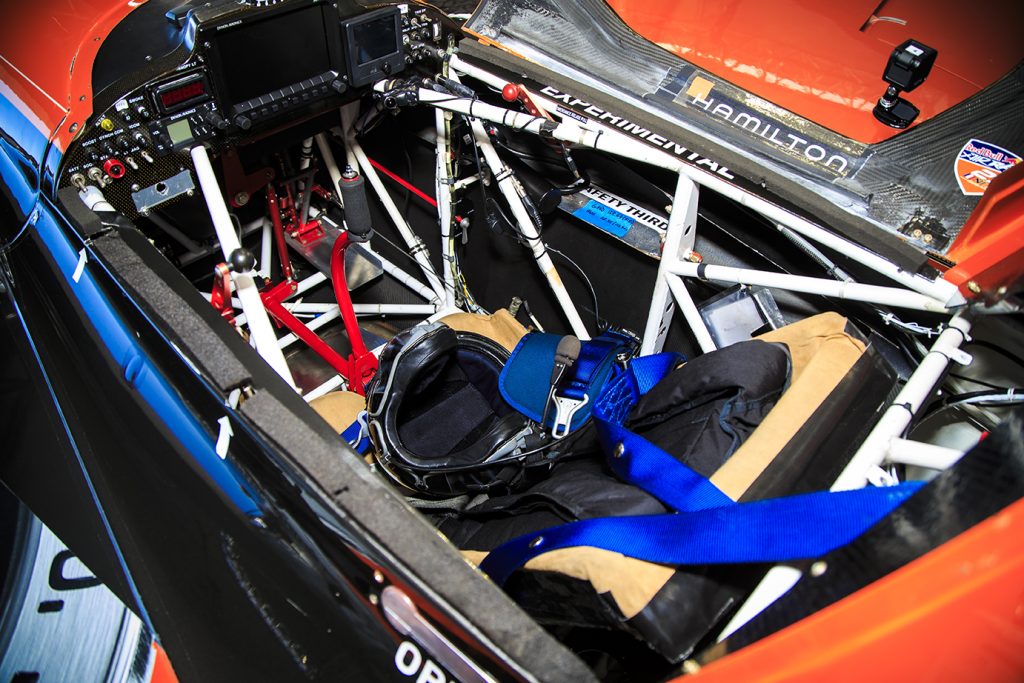
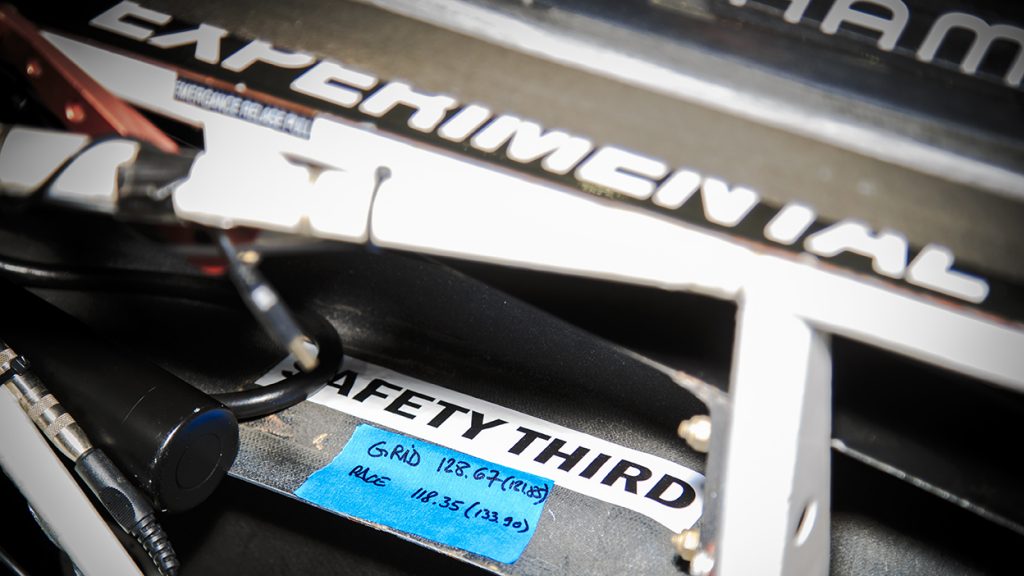

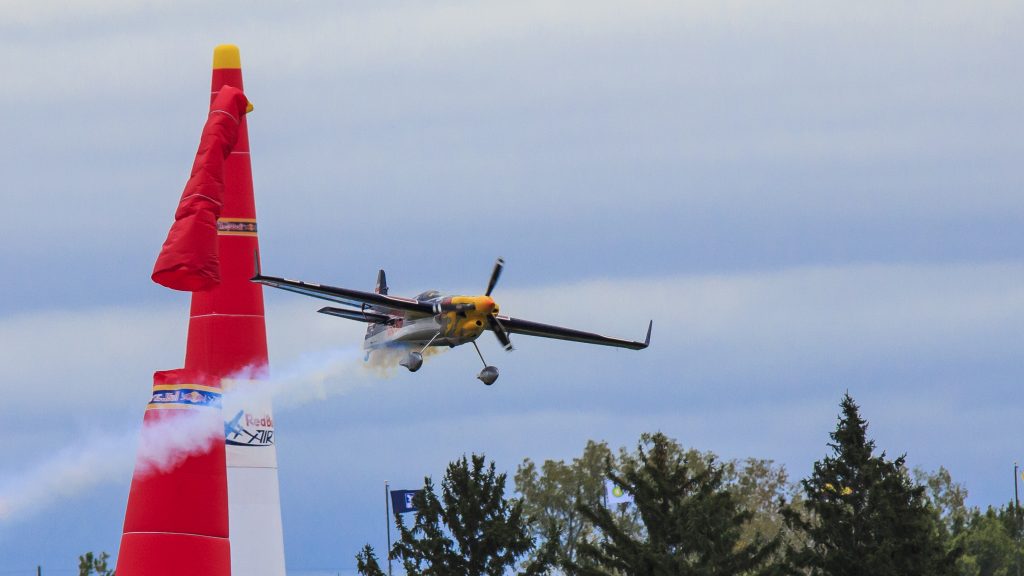
Spirits were high, then, as we landed in Indianapolis for the beginning of the race weekend. The lead-up to the race weekend itself was ripe with drama: as the championship entered its final round, the Red Bull Air Race world title was still wide open. Four out of the fourteen pilots in the series were still within striking distance of the prize, with enough championship points left up for grabs for any of the four to have a realistic shot. In fourth place, with an outside chance at the trophy coming into Indianapolis, was series veteran Kirby Chambliss. Fifty-seven years old and with a wealth of aerobatic experience stretching back to the 1980s, the American ace is no stranger to the pilot’s seat. He’d won the title twice before, earning the Red Bull Air Race series crown in 2004 and 2006, and has built a reputation as a tough, unflappable flier capable of unbeatable speeds on the right day. The next contender, sitting in third as the weekend began, was Canadian pilot Pete McLeod. McLeod was was a bit of a dark horse in the title hunt, having collected the 2017 Fastest Laps award at the previous round in Lausitz, Germany, but despite this speed McLeod was well known as a sensitive jockey behind the stick. In high winds or unpredictable conditions, he has a reputation for conservative flying that leaves him vulnerable to more aggressive foul-weather pilots. In the championship runner-up position before the Indianapolis finale was just such an aggressive pilot- the Samurai of the Sky, Yoshihide
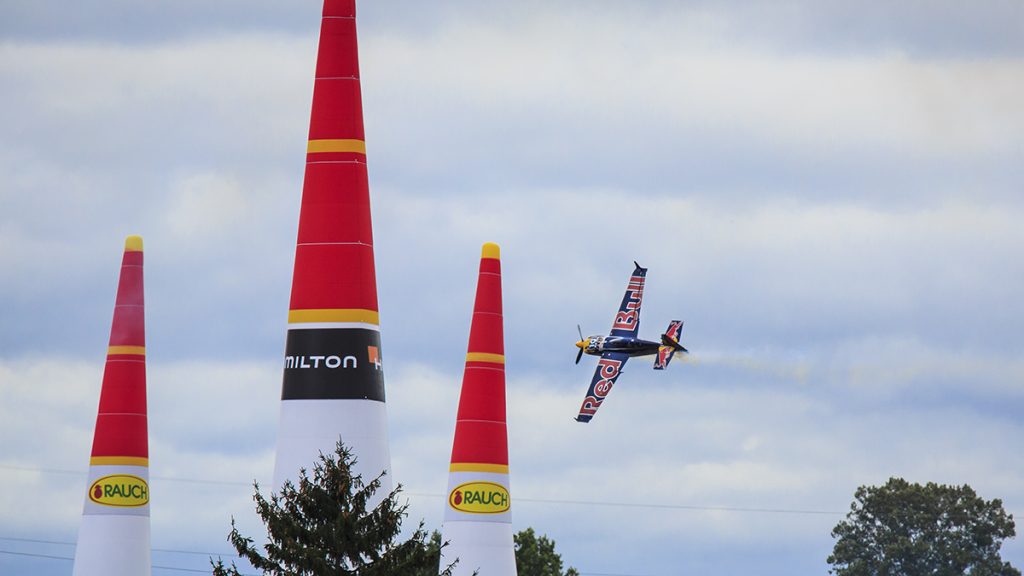
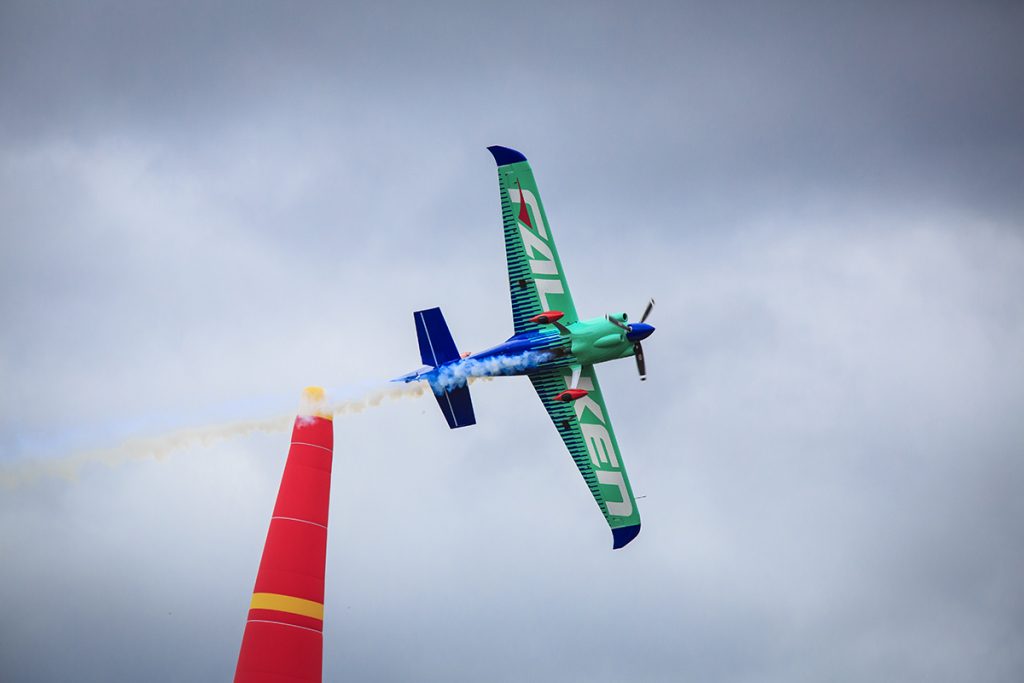
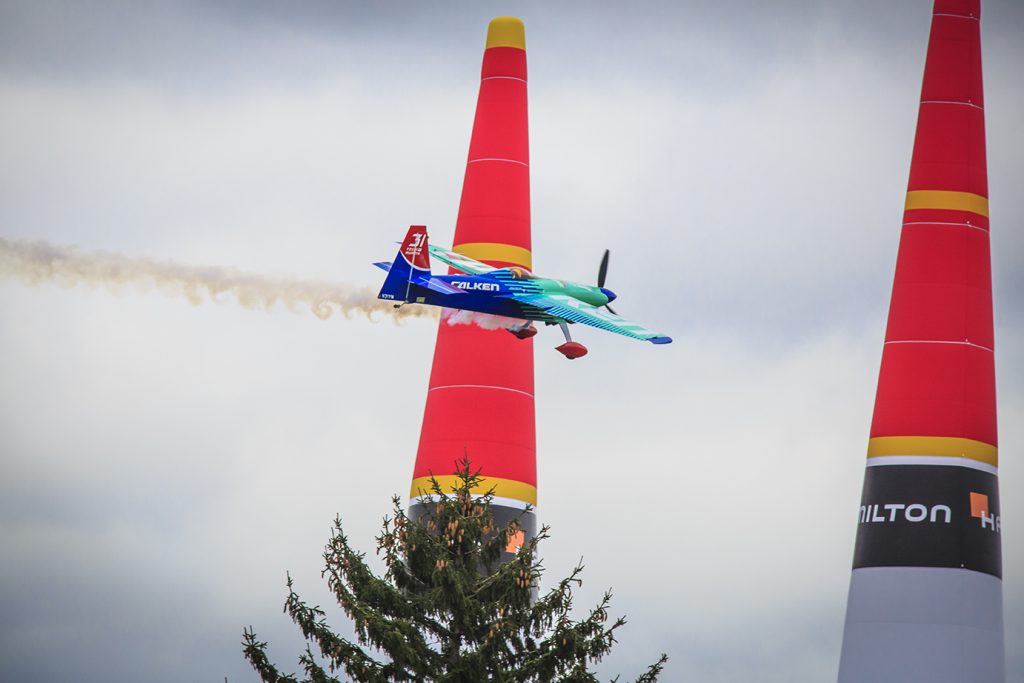

Muroya. This Japanese master’s flamboyant flying style and unusual two-handed grip on the control stick have earned him the “Samurai” moniker, and coming into the race Muroya had some additional motivation to take the win at Indy. 2017 Indy 500 champ and fellow countryman Takuma Sato had accompanied Muroya to this final round, both for moral support and to help secure a Japanese sweep at the Brickyard for 2017. Even with the additional help, Muroya (as well as McLeod and Chambliss) had their work cut out for them at Indy. In order to lift the 2017 championship trophy, these pilots had to dethrone championship leader and title favorite Martin Šonka. Hailing from the Czech Republic, Šonka was more than the favorite to win, he was title sponsor Red Bull’s poster boy and an ice-cold operator renowned for inch-perfect flying no matter the pressure.
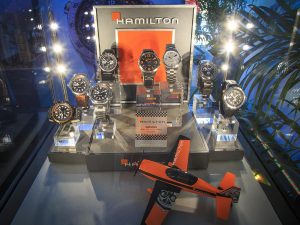
While the title fight entered its final stage, the race itself was truly anyone’s game. As we arrived at a beautifully sunny IMS on Friday morning, the pilots were in the midst of the first practice of the weekend. Our hosts at Hamilton were ecstatic as their pilot Nicolas Ivanoff topped the timesheets, and shortly after the session ended we headed into the hangar to speak with the team and take a closer look at Ivanoff’s incredible machine. Despite the name, Ivanoff is a Frenchman by birth, and carries himself with an old-school French movie star swagger. The confidence isn’t just an act, either. Over a decade and a half of air racing experience, Ivanoff has earned a reputation as a real wild card- for our other racing fans, the closest comparison I can make is to Kimi Räikkönen. While Ivanoff’s not always a the top, on the right day he’s terrifyingly fast, nigh-on unbeatable. After practice, this looked to be one of those days. He was warm and personable as our cadre of inexperienced journalists descended on his plane, poring over every inch of the little aircraft and asking clumsy, inexperienced questions, but it quickly became apparent we were looking at something truly incredible.
Like all but one of the pilots in the Red Bull Air Race series, Ivanoff flies the nimble Zivko Edge 540. The Edge 540 represents the pinnacle of aerobatic design- capable of performing a full 360 degree roll in well under one second, climbing 3,700 feet per minute and sustaining cornering forces of up to 12 Gs, allowing an average lap speed of 220 miles an hour through hairpin maneuvers. The single-seat plane is incredibly compact, with an overall length just over 20 feet and a wingspan of 24 and a half. The steel tube frame is covered with a carbon fiber skin, making it light as a feather overall. The entire package weighs in at a hair under 1550 pounds. Powering the Edge 540 is an air-cooled flat 6 engine (just like a classic Porsche 911!) producing 300 horsepower, giving the whole platform nearly the same power-to-weight ratio as a fire-breathing DTM touring car. The comparison is more apt than you’d think. The more time that I spent with this little marvel, the more familiar it seemed. Just like a racing car, there are engines, wheels, and wings here- the only real difference is that the wings are flipped in the opposite direction for lift, rather than downforce. Even the dryly dark sense of humor is the same here: inside the cramped cockpit, right in Ivanoff’s field of view, is a large decal loudly proclaiming “SAFETY THIRD”.
After a half hour of fawning over the Edge 540 in its striking orange and black Hamilton livery, our hosts directed us to one of the most important components of the Red Bull Air Race, the inflatable pylons. Pylons define the course in air racing, building a series of slaloms, tight corners and straightaways that create the most challenging flying circuits in the world. The pylons are either single, indicating a rolling turn, or paired to create a gate, which must be flown through within ten degrees of level flight. Red Bull’s pylons are unique, standing at 82 feet high with the top third in brilliant red for easy identification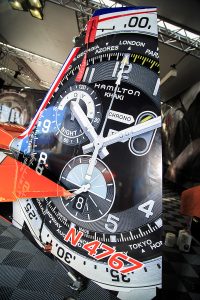 of the legal flying altitude and a contrasting yellow stripe for measuring wing roll angle. The shape of these pylons is a simple but genius solution to several problems as well. At a glance, these pylons are cone shaped, but more accurately they’re semi-conical. One side of the pylon tapers like a cone, but the other is straight up and down. Not only does this clearly indicate which side of the pylon pilots are supposed to fly on (the plane must always remain on the straight side, or else incur a time penalty) but it also makes the pylons highly wind resistant, able to avoid swaying in winds up to 25 knots. What really sets the Red Bull pylon design apart, however, is the material used. The lower white portion is a tough rubberized weatherproof canvas, while the top red section is a lightweight nylon not unlike a parachute. While a parachute is designed to prevent and minimize any ripping, the pylon’s unique fabric is intended to tear away completely on impact. The importance of this is twofold. Firstly, it immediately shows any contact a pilot makes with a pylon to accurately apply the three second added time penalty. More importantly, however, the quick and easy tearing prevents any damage to the aircraft or pilot in the event of an impact. When these touches happen, the pylons are easily and quickly replaceable. The top red portion is attached to the rest of the pylon by a zipper, and a new pylon can be zipped on and fully inflated in under two minutes. All together, the pylons assembled at Indy included five level flight gates, a three pylon chicane, one rolling turn and an end-of-lap VTM. A VTM, or vertical turning maneuver, is where air racing sets itself apart from its counterparts on the ground most dramatically. After flying through the start/finish gate, pilots loop through a 300 foot high turn going straight up and over the top before rolling and continuing in the opposite direction. This maneuver puts pilot and plane alike through incredible strain, with the aircraft maintaining its average lap speed of 220 miles an hour and experiencing 10 G of load. A full timed session around this demanding and technical course is three laps, with pilots averaging this feat in around 1 minute, 5 seconds.
of the legal flying altitude and a contrasting yellow stripe for measuring wing roll angle. The shape of these pylons is a simple but genius solution to several problems as well. At a glance, these pylons are cone shaped, but more accurately they’re semi-conical. One side of the pylon tapers like a cone, but the other is straight up and down. Not only does this clearly indicate which side of the pylon pilots are supposed to fly on (the plane must always remain on the straight side, or else incur a time penalty) but it also makes the pylons highly wind resistant, able to avoid swaying in winds up to 25 knots. What really sets the Red Bull pylon design apart, however, is the material used. The lower white portion is a tough rubberized weatherproof canvas, while the top red section is a lightweight nylon not unlike a parachute. While a parachute is designed to prevent and minimize any ripping, the pylon’s unique fabric is intended to tear away completely on impact. The importance of this is twofold. Firstly, it immediately shows any contact a pilot makes with a pylon to accurately apply the three second added time penalty. More importantly, however, the quick and easy tearing prevents any damage to the aircraft or pilot in the event of an impact. When these touches happen, the pylons are easily and quickly replaceable. The top red portion is attached to the rest of the pylon by a zipper, and a new pylon can be zipped on and fully inflated in under two minutes. All together, the pylons assembled at Indy included five level flight gates, a three pylon chicane, one rolling turn and an end-of-lap VTM. A VTM, or vertical turning maneuver, is where air racing sets itself apart from its counterparts on the ground most dramatically. After flying through the start/finish gate, pilots loop through a 300 foot high turn going straight up and over the top before rolling and continuing in the opposite direction. This maneuver puts pilot and plane alike through incredible strain, with the aircraft maintaining its average lap speed of 220 miles an hour and experiencing 10 G of load. A full timed session around this demanding and technical course is three laps, with pilots averaging this feat in around 1 minute, 5 seconds.
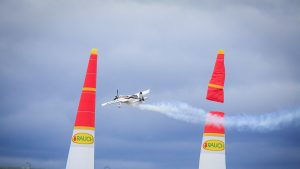

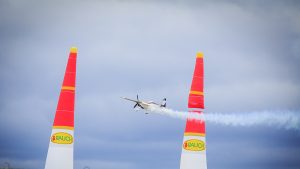

These 14 fliers are the greatest pilots in the world, however, and race victories often come down to the hundredths of a second. With that in mind, Hamilton has an incredibly difficult job to accurately time and score these events as the official timekeeper. The crack team of timing experts Hamilton employs, however, are more than up to the job, and they bring with them an incredibly extensive array of equipment to achieve it. The timekeeping team of four technicians sit in a booth in IMS’s famous Pagoda structure, high above the course with a commanding view of the entire circuit. Each technician monitors a bank of computers, linked to photo finish cameras, timekeeping sensors, and wing level sensors located at each pylon. Each pylon contains a bank of three sensors with redundant systems for each in case of failure. The photo finish cameras operate at 10,000 frames per second, allowing the team to accurately observe every move from every pilot in every session. In the event of an incorrect level flight penalty (two seconds added to lap time), inadequate marker smoke emitted during lap (one second time penalty), incorrect flight altitude (two seconds), or a pylon hit (a full three seconds!), the team can analyze and highlight the relevant footage and timing data within seconds, delivering to the race officials their recommended penalty with documentation. This allows for speedy and accurate decisions by race stewards, also reducing the number of disputed calls by angry team owners to almost zero.
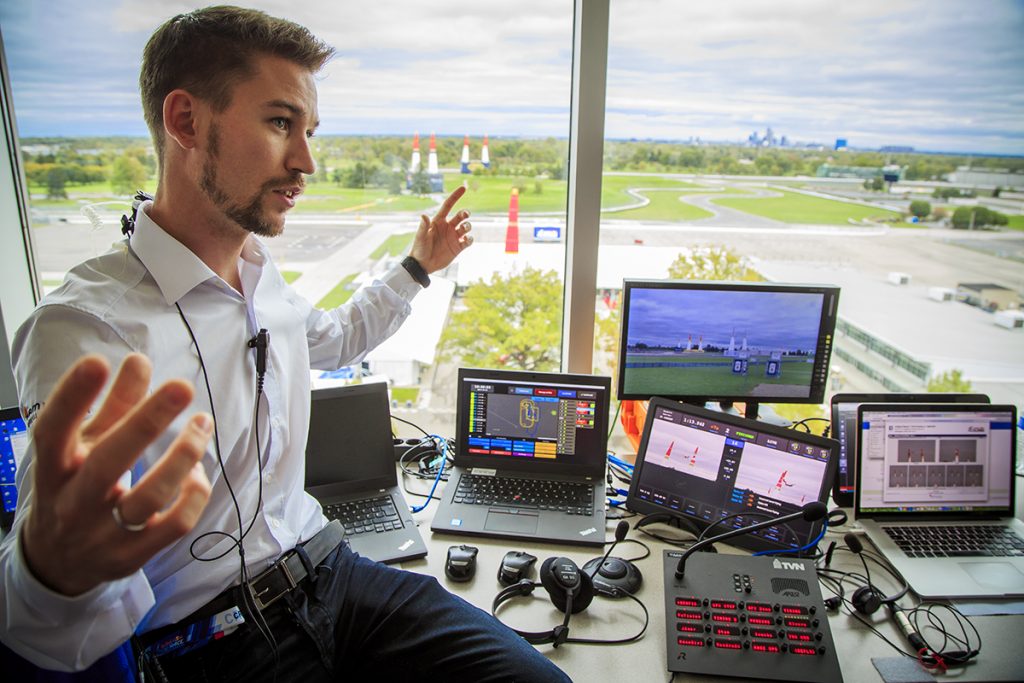
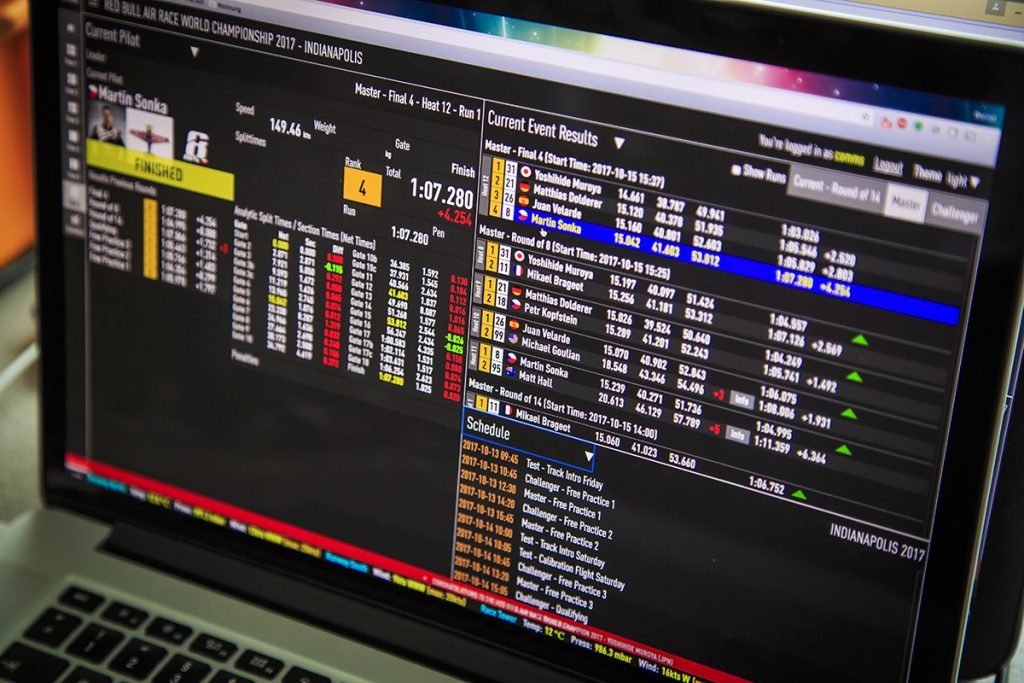
With a far better understanding of the sport under our belts, we settled in to watch the afternoon’s qualifying session. After Ivanoff’s successes in morning practice, expectations were high, but the rest of the field had found their footing and the French ace could only manage 7th. Meanwhile, the grizzled American Kirby Chambliss flew too low through one of the course gates and the resulting two second time penalty landed him all the way back in 12th for the race. The Flying Samurai Yoshihide Muroya picked up a two second penalty as well, this one for incorrect level flying through a gate, and landed just ahead of Chambliss in the 11th spot. Pete McLeod put together a solid 1:05.464 qualifying time to line up 5th, but championship leader Martin Šonka managed to pip the Canadian by a mere thousandth of a second- a 1:05.463- to claim 4th spot. It was affable Australian Matt Hall that led the way after qualifying, however, posting a blazing time of 1:04.149 to put his Edge 540 on pole. As the session ended and spectators began to filter out of the speedway, there was one more surprise for the day.
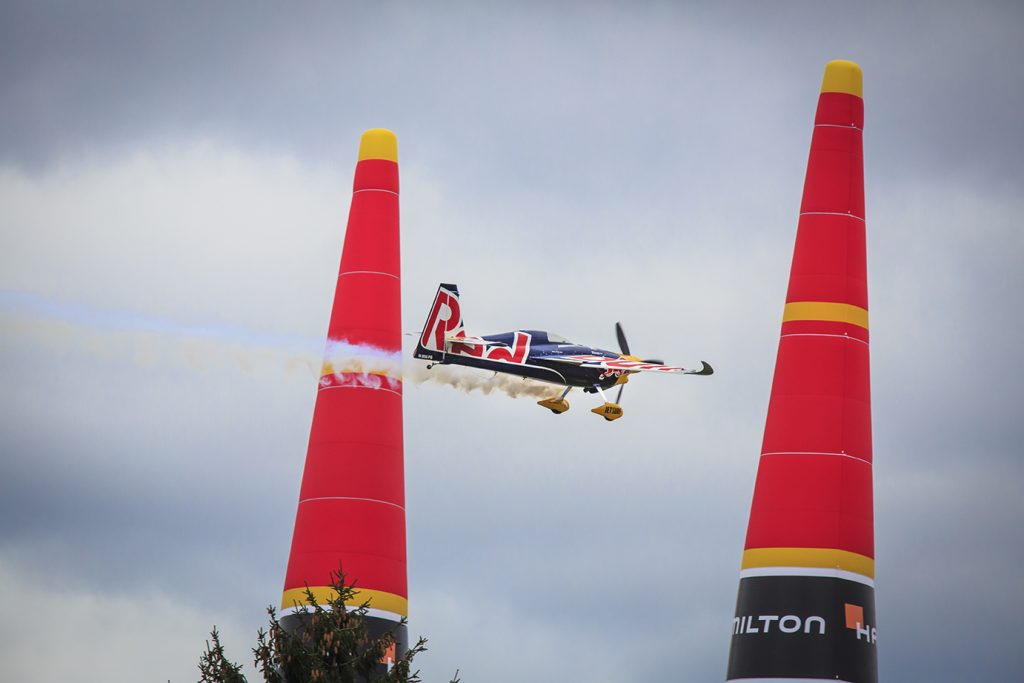
Walking out of the Air Race Sky Lounge and back into the infield, we heard music blaring over the loudspeakers. My father and I looked at each other, puzzled, and then walked toward the start/finish line of the track, which seemed to be the source. As it turned out, the Aircraft Owner’s and Pilot’s Association, or AOPA (yes, the same AOPA that is the stuff of ‘60s Breitling legend) was having a massive party in the Brickyard’s pit lane. We walked in, completely awestruck. Between the two of us, my dad and I have four decades of automotive media experience. My father’s been covering races at Indy going back to the ‘80s, and neither of us have ever heard of anyone that wasn’t part of a race team currently running at IMS ever getting access to the pits or the track surface itself. Here we were, however, walking onto the most hallowed ground in motorsport like it was our local Wal-Mart. To say this was surreal would be a gross understatement. It’d be like walking into the Oval Office, or stepping into Times Square with no one else around. But there we were, schmoozing with aviation types who seemed to have no concept of the gravity of this moment. Then in one brief moment, the holy of holies opened up. There was a break in the low pit wall, and nobody around that seemed to be security. We both bolted out onto the track surface itself, staring down the grid at the long, iconic straight to Turn 1. Under our shoes was the last remnant of the original track surface that gave Indianapolis Motor Speedway its name. For the uninitiated, when IMS first opened in 1911, the track surface wasn’t paved, or a wooden board track as was common at the time. No, Indy was a brick road, and while over the years the bricks had given way to smooth black asphalt a three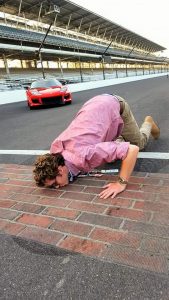 foot strip of the mortared surface remained at the starting line- a yard of bricks for the Brickyard. One of the greatest traditions in racing is for winners at Indy to kneel down and kiss those bricks, paying homage to this holy tabernacle of speed. I’ve dreamed about kissing those bricks since I was five years old, and so has my father. We’re both too big and slow for IndyCar now, so without saying a word we knew this was our one chance. Slowly, furtively, still looking around for some track official to chase us off, my father and I both dipped down and pressed our lips to the most historic spot in our beloved sport. I’ve had my fair share of kisses, from the meaningful and romantic to the fiery and passionate, and I can say without a shadow of a doubt that after I’ve forgotten all the women (except one, possibly) the kiss I’ll remember most was with a 106 year old piece of construction material in central Indiana. It was life-affirming. It was thrilling. It was more than a little dusty. Even though I hadn’t properly earned it, as the sun set over Turn 1 on my 25th birthday, I could once and forever claim to have kissed the bricks at Indy.
foot strip of the mortared surface remained at the starting line- a yard of bricks for the Brickyard. One of the greatest traditions in racing is for winners at Indy to kneel down and kiss those bricks, paying homage to this holy tabernacle of speed. I’ve dreamed about kissing those bricks since I was five years old, and so has my father. We’re both too big and slow for IndyCar now, so without saying a word we knew this was our one chance. Slowly, furtively, still looking around for some track official to chase us off, my father and I both dipped down and pressed our lips to the most historic spot in our beloved sport. I’ve had my fair share of kisses, from the meaningful and romantic to the fiery and passionate, and I can say without a shadow of a doubt that after I’ve forgotten all the women (except one, possibly) the kiss I’ll remember most was with a 106 year old piece of construction material in central Indiana. It was life-affirming. It was thrilling. It was more than a little dusty. Even though I hadn’t properly earned it, as the sun set over Turn 1 on my 25th birthday, I could once and forever claim to have kissed the bricks at Indy.
That night, after dinner, my thoughts finally turned to the G-Flight of the next day. I’d spent the day watching these pilots pulling superhuman G-forces at impossible speeds, and subsequently watching YouTube videos in my room of celebrities, fellow journalists, and even G-force hardened professional racing drivers vomiting their guts out during G-Flights. Shortly thereafter, I remembered I was a wuss. “I’m terrible with roller coasters,” I thought to myself, “What the hell am I doing here?” I thought about throwing myself on the mercy of the grizzled, unflappable veteran stunt pilot that I imagined at the helm of this monster plane. “Please, sir,” I would blubber, “Take it easy on me, for I am a weak-stomached baby who balks at most of the rides at Six Flags.” As the night wore on, though, I steeled myself. I had come across the country for a once-in-a-lifetime opportunity, and I was going to take it, vomit be damned. No matter what the next day brought, I was going in that damned airplane.
I awoke to the patter of a gentle Midwestern shower on my window. The skies above Indianapolis were pig-iron gray as our shuttle returned us from the hotel to the speedway for race day, the spitting rain becoming an angry downpour as the wind freshened to a stiff breeze. Almost immediately, the decision was made to delay the race start by an hour, then two. Wind and rain meant more than delays, however. Like any form of motorsport, rain brings more than gray skies and water to the Red Bull Air Race. Rain brings chaos. It is the great equalizer, that which affects all machines equally and separates the truly great pilots from the good. It’s in changing conditions that you see the classic performances, the races that stick with you and that you bring up years later over drinks when discussing the sport. In fact, for the Red Bull Air Race, it wasn’t really rain that was the problem (although I’m told if it rains hard enough, the force of raindrops hitting the fuselage at over 200 miles an hour can strip the paint clean off the plane), it was the wind. The pylons are only wind resistant to only 25 knots, and any more than that causes them to sway violently- a real problem when pilots are supposed to fly between two of them with millimeter precision. Just as importantly, as mentioned previously the planes themselves are extremely lightweight. Strong enough winds can blow them slightly but undeniably off course, especially during the aggressive cornering maneuvers necessary for a competitive time. With that in mind, we waited well into the afternoon for the wind to die down, which it eventually did. Not to a full calm, but just below the 25 knot threshold deemed safe for competition.

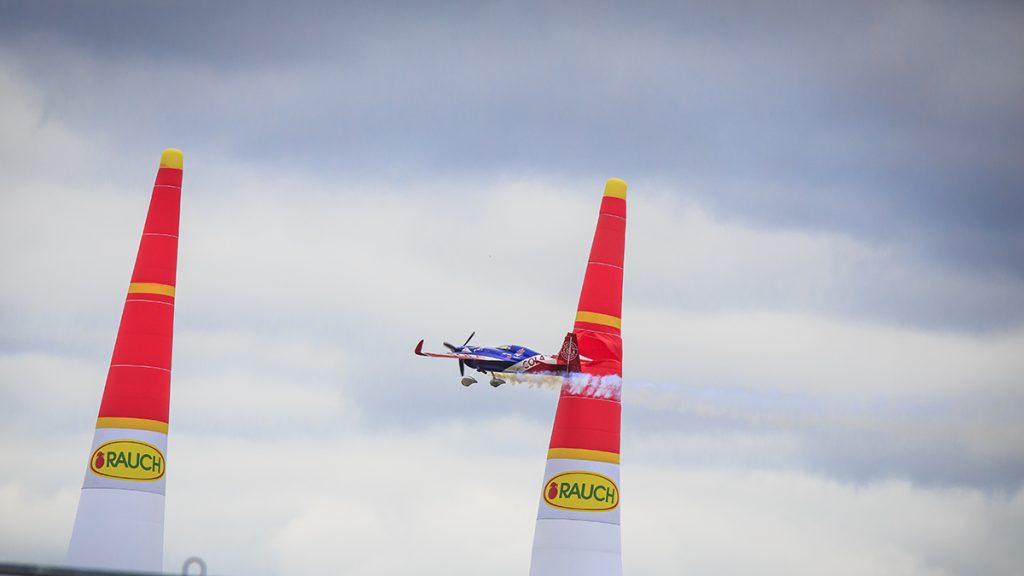
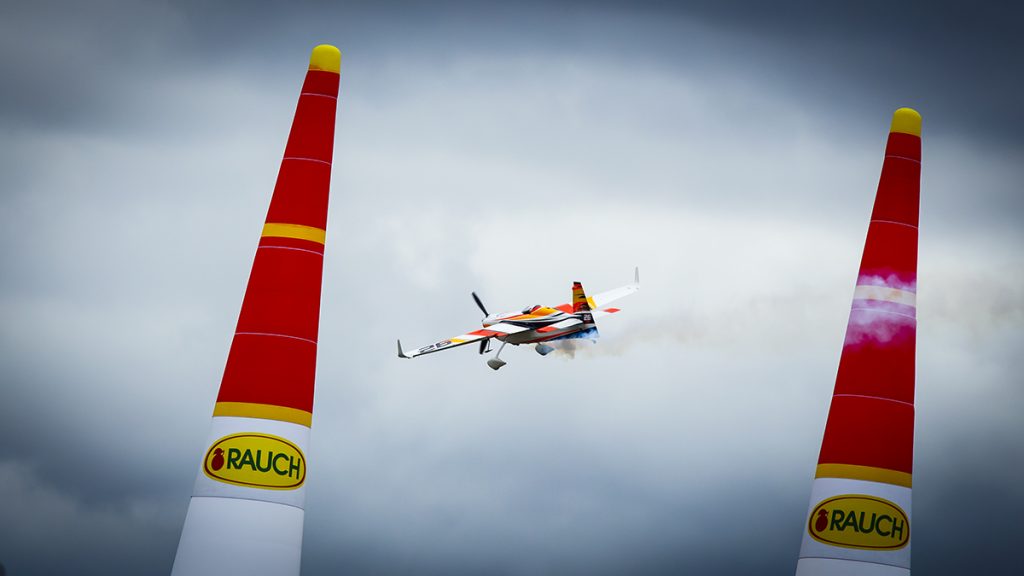
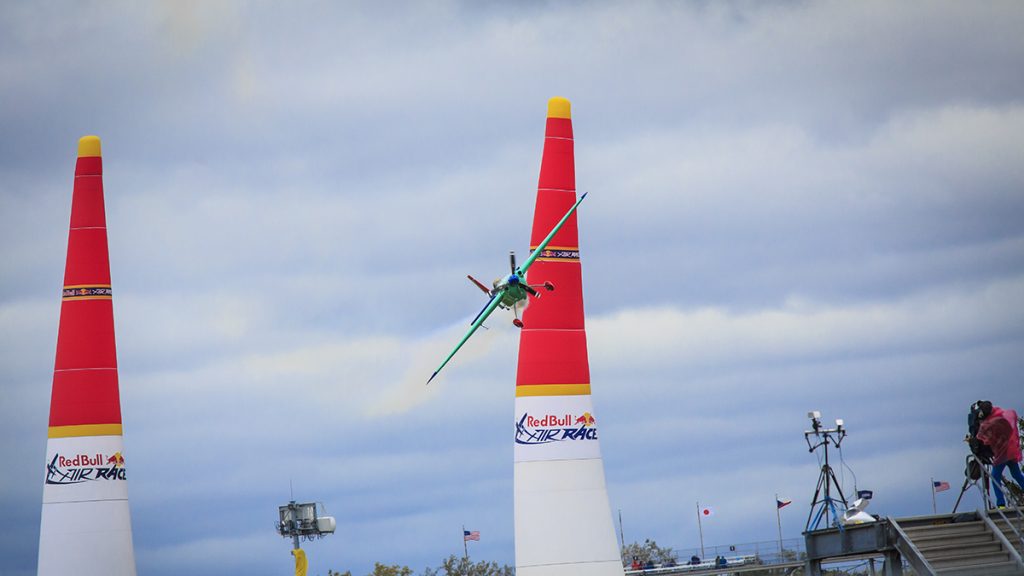
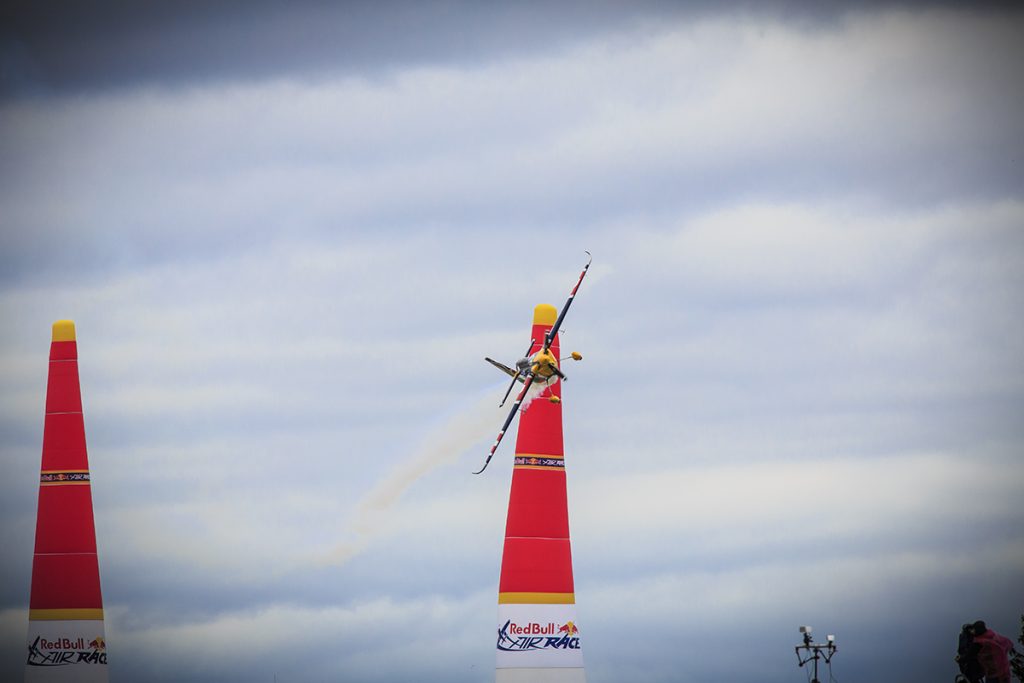
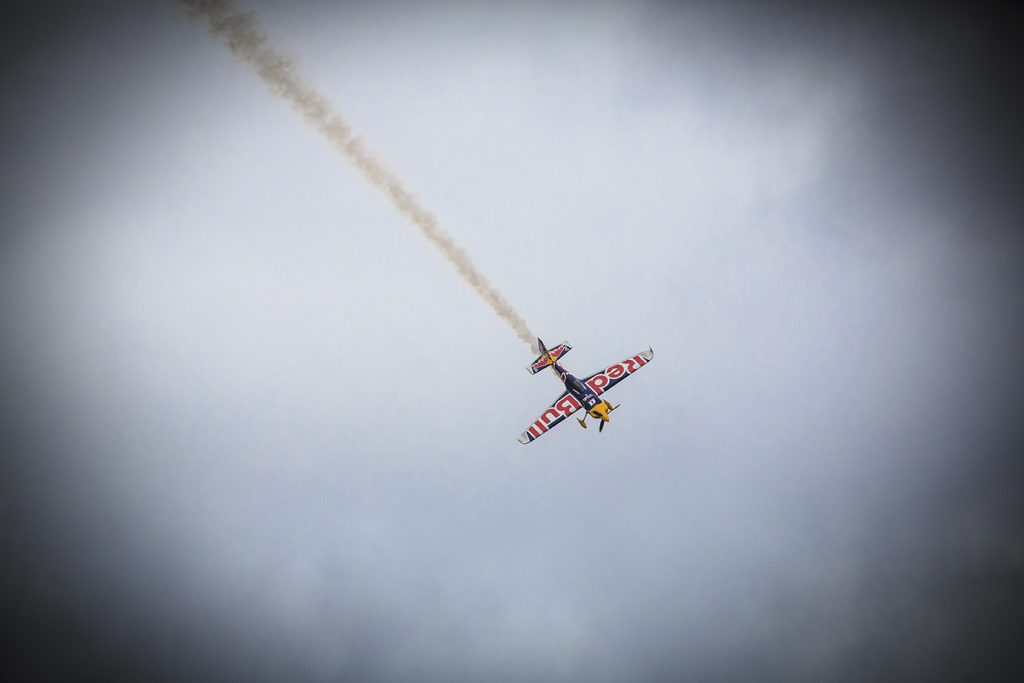
The race itself began with the Round of 14. This was a first elimination round with the top qualifier in a timed heat against the 14th place qualifier, followed by the 2nd place flier against the 13th pilot, and so on and so forth. The winners of these heats, along with the fastest loser, would advance to the Round of 8. Almost immediately, the championship fight was thrown into disarray. The very first heat of the race pitted Canadian title contender Pete McLeod against young French pilot Mikaël Brageot. McLeod looked racy through the first two laps, but a pylon hit on his final lap cost him three seconds and the heat. Before the race was two heats old, McLeod was out of contention for the championship. Heat #2 was even more interesting. The top two title competitors were seeded against each other, with Muroya the Flying Samurai taking the course before Šonka the poster boy. Muroya flew a blistering circuit, but after a two second incorrect flight level penalty he looked to be easy pickings for the Czech ace. Šonka was similarly quick, but the high winds claimed another victim as his plane flew wide and clipped a pylon for a three second penalty. Šonka had lost the heat with a 1:07.866, but with the field setting slower times as the winds made them cautious, he still could hope for the fast loser spot. In his heat Kirby Chambliss, America’s one hope at the world title, had no fear of the high winds. He leaned on his decades of flying experience and looked on pace to set the fastest time so far before pushing too hard and clipping a pylon in the gates, costing him the heat and any lingering chance at the championship. Meanwhile, Hamilton’s pilot Nicolas Ivanoff had a dreadful flight in the iffy conditions, collecting two level penalties and a cut pylon for seven seconds of penalty time to finish dead last in the field on time. A great day for our hosts, it was not. At the end of the Round of 14, then, Šonka had survived by the skin of his teeth. There was still a two-way battle for the title, with Muroya needing Red Bull’s own pilot to finish third or worse to claim the championship trophy. This round was followed by the Round of 8, another round of eliminations leading to the Final 4.
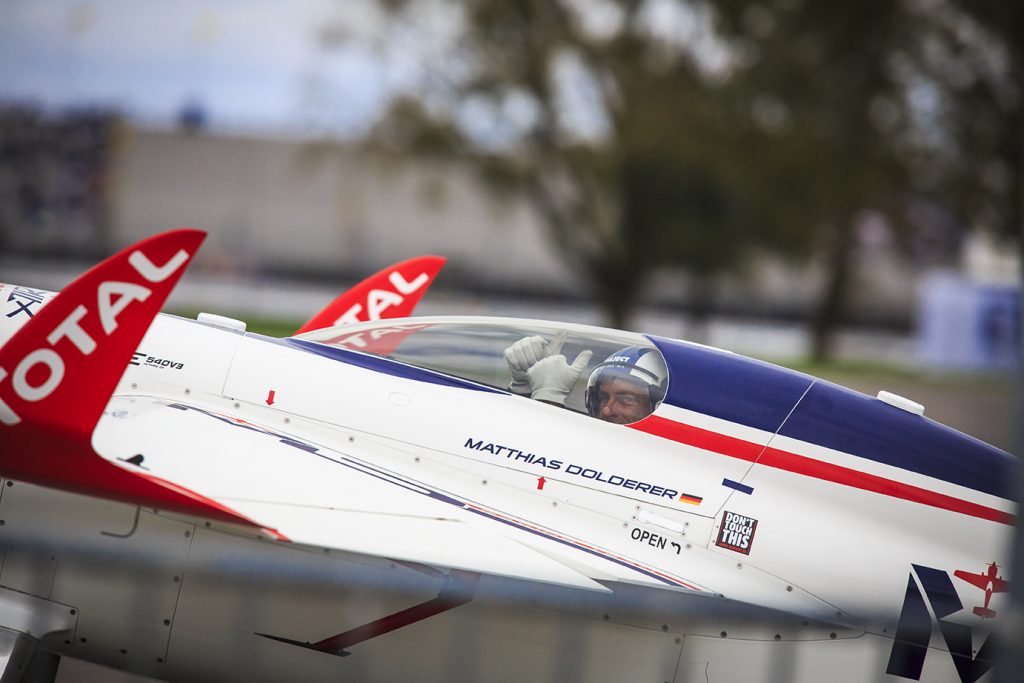

Both of the surviving title contenders broke through to this final round, matching up alongside last year’s champion, Matthias Dolderer from Germany, and Spanish wild card Juan Velarde. First up in this final round was Yoshihide Muroya. As countryman and 2017 Indy 500 winner Takuma Sato looked on in apprehension alongside a large and enthusiastic Japanese fan contingent (15 feet behind me, I might add), the Samurai of the Sky took off into a course still howling with wind. I still don’t claim to be an expert on air racing by any means, but as a motorsport lover what happened over the next three laps was some of the finest racecraft I’ve ever seen. Muroya was precise, aggressive, and kept getting quicker over each lap- finding tenths of a second through the fast curves, the chicanes, even the treacherous 10G vertical turn maneuvers. He carved through the circuit like a demon, and at the end he came away with a 1:03.26, smashing the track record by over a full second. The title was still far from his, however. If Martin Šonka could simply manage to beat Dolderer and Velarde, a seemingly easy task, the title would go back to the 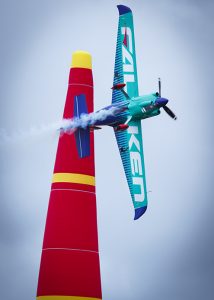 Czech Republic. As he took off into the course after respectable flights from both the German and the Spaniard, it was anyone’s guess what might happen. Šonka’s early intervals were quick. Perhaps not quite as quick as Muroya’s, but certainly faster than Dolderer and Velarde, and as he came into the vertical turn maneuver to start his third and final lap, his grip on the championship title seemed secure. As the Czech ace pulled his plane into the final climb, however, disaster struck. His engine stalled as he climbed through the vertical turn, costing him airspeed and precious seconds as the plane glided and Šonka desperately tried to restart the engine. In the end, he succeeded and the plane finished the three lap circuit, but the restart had dropped him more than 4.2 seconds behind the pace of Muroya. Martin Šonka had finished fourth. The Japanese crowd behind me exploded as it became clear that the Samurai had taken the title, erupting in screams and cheers which doubled as Muroya landed his blue and green Edge 540 and taxied past us, cockpit open and waving furiously. As the podium ceremony began and the stoic, somber tones of the Japanese national anthem echoed forth from the loudspeaker, I swear I saw him crying tears of joy. It’s those moments that stick with me even more than all the incredible competition, all the daring speeds and all the glamour of racing. It’s a reminder that behind it all are real human beings, with real human drama. These are the moments that casual racing observers rarely care to watch, but they’re the ones that matter most in the end.
Czech Republic. As he took off into the course after respectable flights from both the German and the Spaniard, it was anyone’s guess what might happen. Šonka’s early intervals were quick. Perhaps not quite as quick as Muroya’s, but certainly faster than Dolderer and Velarde, and as he came into the vertical turn maneuver to start his third and final lap, his grip on the championship title seemed secure. As the Czech ace pulled his plane into the final climb, however, disaster struck. His engine stalled as he climbed through the vertical turn, costing him airspeed and precious seconds as the plane glided and Šonka desperately tried to restart the engine. In the end, he succeeded and the plane finished the three lap circuit, but the restart had dropped him more than 4.2 seconds behind the pace of Muroya. Martin Šonka had finished fourth. The Japanese crowd behind me exploded as it became clear that the Samurai had taken the title, erupting in screams and cheers which doubled as Muroya landed his blue and green Edge 540 and taxied past us, cockpit open and waving furiously. As the podium ceremony began and the stoic, somber tones of the Japanese national anthem echoed forth from the loudspeaker, I swear I saw him crying tears of joy. It’s those moments that stick with me even more than all the incredible competition, all the daring speeds and all the glamour of racing. It’s a reminder that behind it all are real human beings, with real human drama. These are the moments that casual racing observers rarely care to watch, but they’re the ones that matter most in the end.
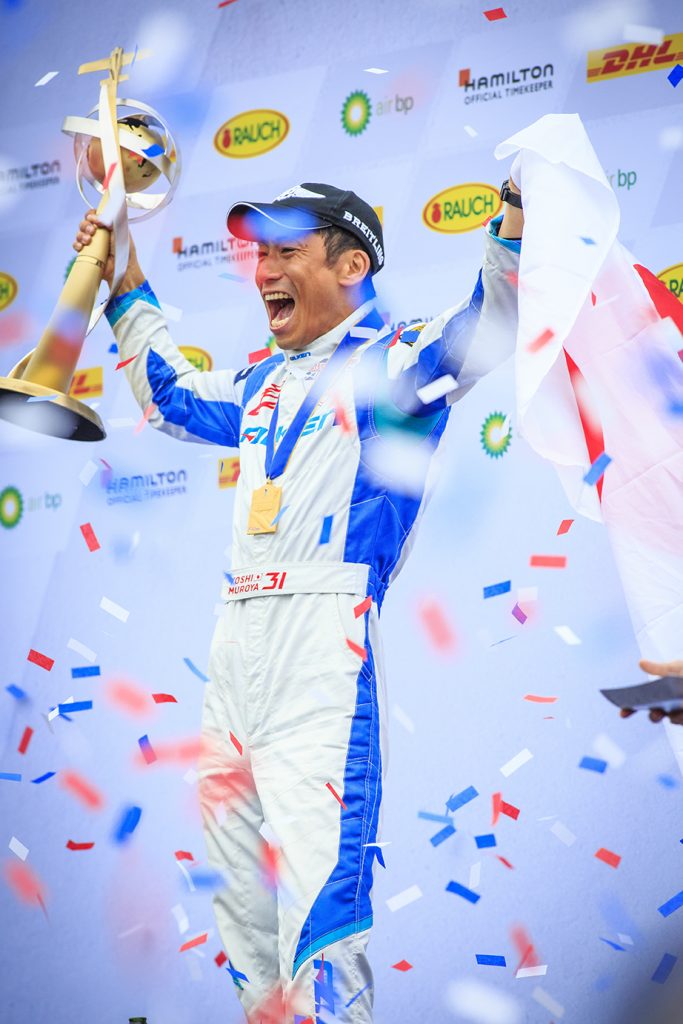
With the race itself over, all that was left for me before my flight back to Los Angeles was the G-Flight. Fear gave way to disappointment as I heard the news from the Hamilton representatives. While 25 knots may have been the limit for trained racing pilots in competition, journalists in the passenger seat didn’t go up in high winds at all. It wasn’t their decision, the G-Flight pilots were at another airstrip offsite and made the choice, but despite my earlier trepidation it still hurt to lose this opportunity. Don’t worry, the Hamilton reps assured me, it’s an excuse to come back next year. It’s a chance that I would love nothing more than to take. Hamilton had an incredible presence in this series, with an exciting, charismatic team and a truly breathtaking array of technology as official timekeeper. If I ever get the chance to take a second look, I wouldn’t dare decline.
Words: Sean Paul Lorentzen Photos: Randy Lorentzen





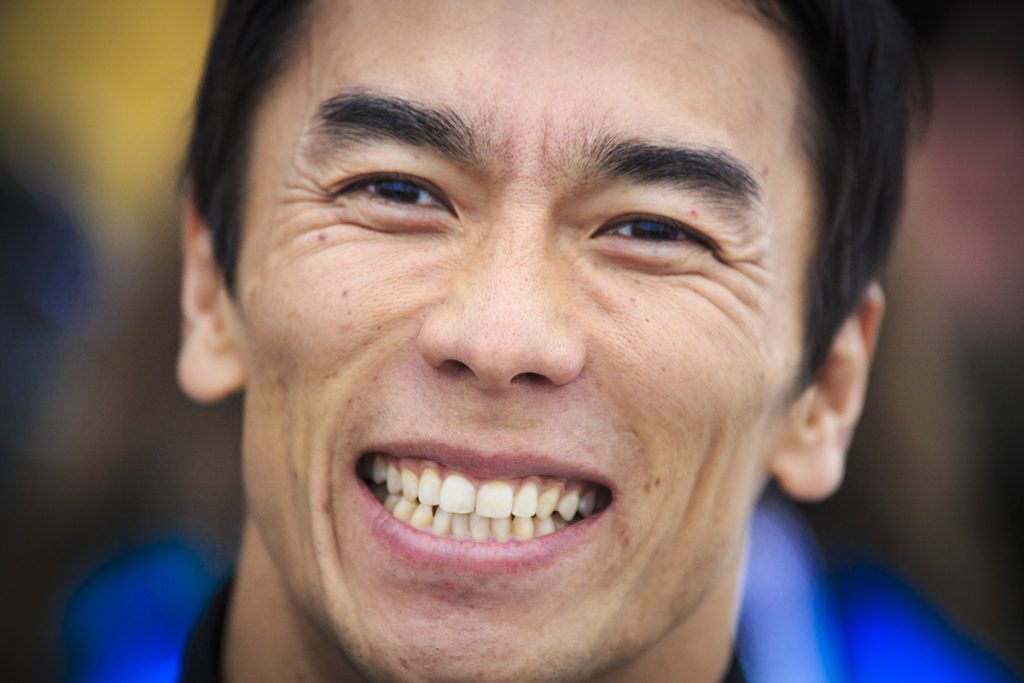
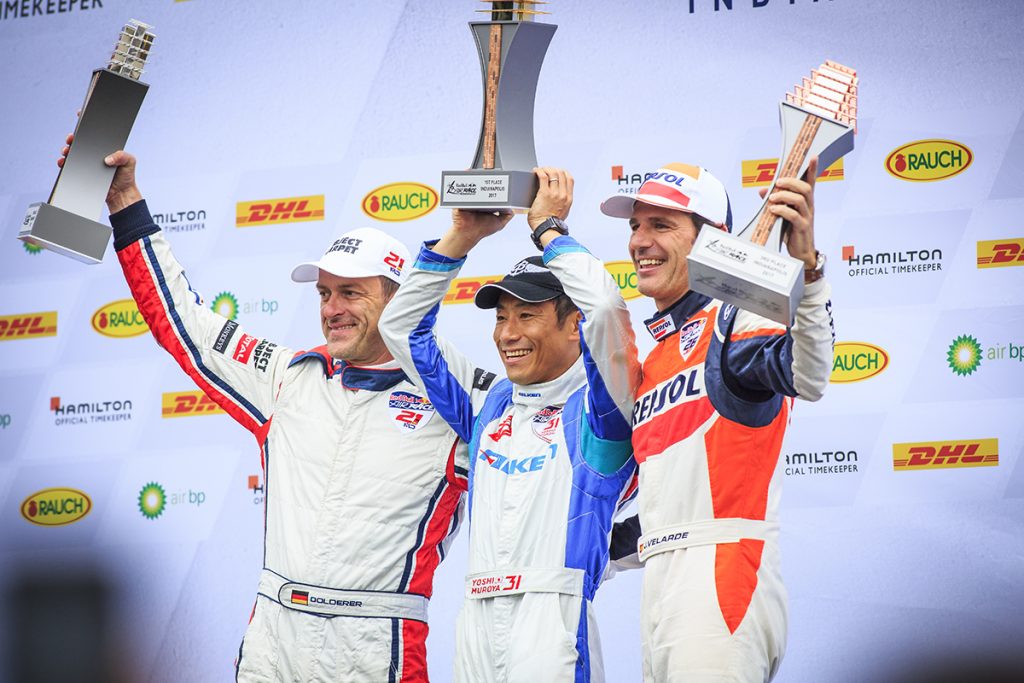











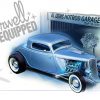
2 Responses